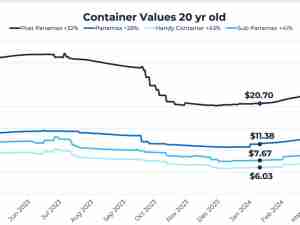Trade affected by softened economic activity, changing shipment patterns
Cargo moving through the Port of Long Beach eased up in October following reduced consumer demand and a shift of imported goods toward the Gulf and East coasts.
Dockworkers and terminal operators moved 658,428 twenty-foot equivalent units (TEUs) of cargo containers last month, a 16.6% decline from October 2021. Imports were down 23.7% to 293,924 TEUs and exports decreased 2% to 119,763 TEUs. Empty containers moved through the Port fell 13.4% to 244,743 TEUs.
“The supply chain is returning back to normal and cargo continues to move, so I am optimistic that store shelves will be stocked and goods will be available for delivery during the holiday season,” said Port of Long Beach Executive Director Mario Cordero. “Over the long term, the San Pedro Bay ports complex will continue to be a competitive, strategic and sustainable gateway for trans-Pacific trade.”
“We continue to collaborate with our industry and workforce partners to ensure the safe, sustainable and reliable delivery of goods moving through the Port,” said Long Beach Harbor Commission President Sharon L. Weissman. “The Port of Long Beach has a lengthy history of adapting to the needs of our customers during the best of times and the most difficult of times.”
Despite surging inflation and interest rates, economists say consumers still have enough resources to weather economic headwinds. Experts feel softening consumer activity will lead to a better balance between supply and demand, and reduce stress on the national supply chain.
The Port of Long Beach has moved 8,000,811 TEUs during the first 10 months of 2022, up 1.5% from the same period in 2021.
For complete cargo numbers, visit polb.com/statistics.
The Port of Long Beach is one of the world’s premier seaports, a gateway for trans-Pacific trade and a trailblazer in goods movement and environmental stewardship. As the second-busiest container seaport in the United States, the Port handles trade valued at more than $200 billion annually and supports 2.6 million trade-related jobs across the nation, including 575,000 in Southern California.









